Apple iPhone XS and XS Max Review

Review index
Display | Interface and features | Performance: A12 Bionic and the Neural Engine | Camera | Multimedia | Call quality | Battery life | ConclusionThe new iPhone XS and XS Max are the best iPhones ever, and they’re also Apple’s most expensive phones ever. Starting from $999 for a 64 GB XS and going all the way up to $1449 for a maxed-out XS Max, Apple sure is asking a lot for its latest pocket gadgets. Are its products delivering with the same intensity, though? Is there reciprocity in this deal?
These are tough questions, and ones which can be answered only after careful examination of the phones’ inner and outer workings.
These are tough questions, and ones which can be answered only after careful examination of the phones’ inner and outer workings.

Design
New Gold option comes to shake things up a little
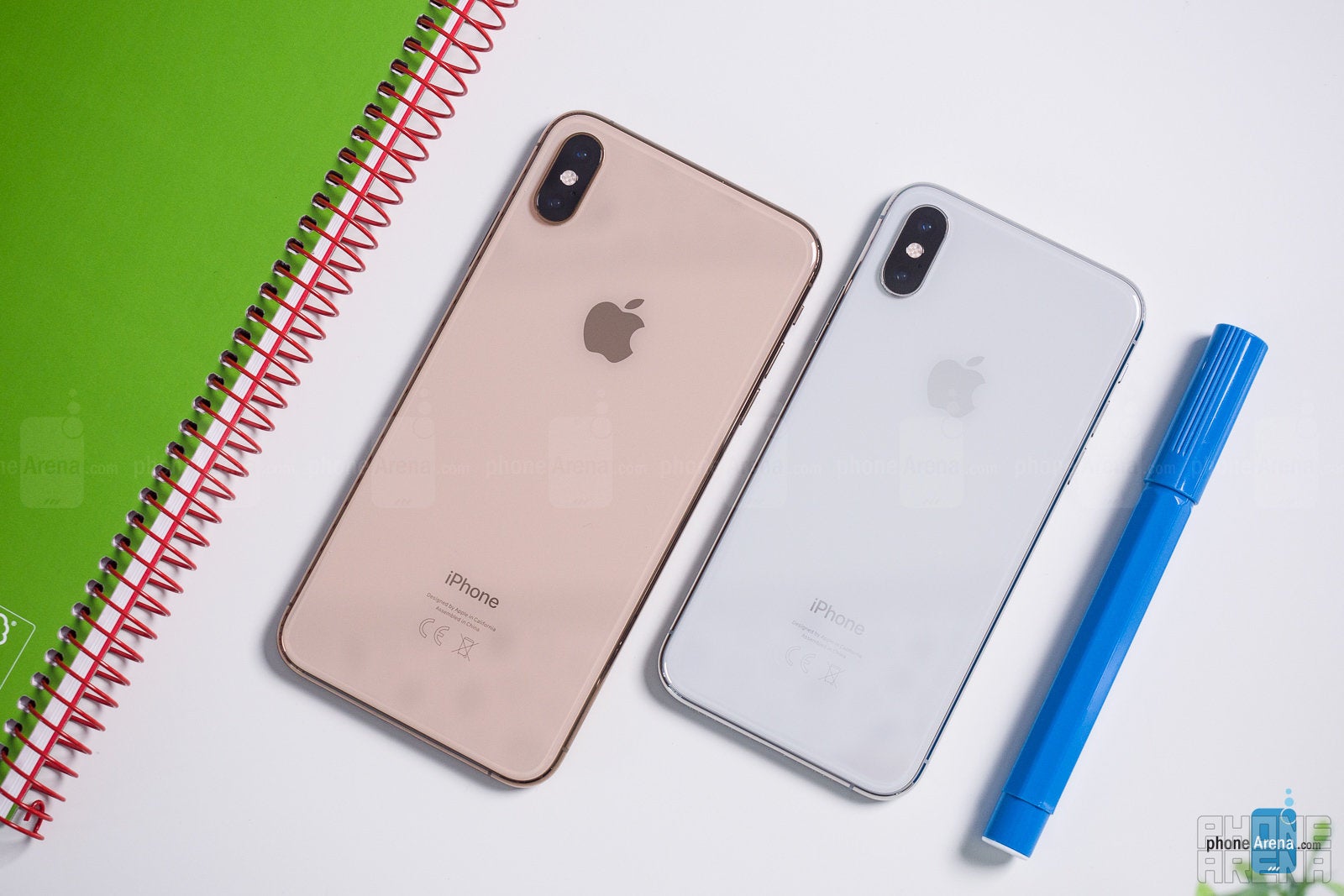
Not much has changed in the iPhone XS’s design since last year. Actually, nothing has changed, with the exception of a new antenna band here and there. The biggest novelty as far as design goes is the new gold color variant. Our XS Max is in gold and it looks creamy and delicious. However, if you’re the kind of person who gets quickly bored by any single color, getting the space grey or silver variant may be the smarter way to go.
The new iPhone XS and XS Max may look the same as the X, but they are more tightly constructed than ever, now supporting IP68 water and dust certification, instead of IP67 in the iPhone X. It’s not a big difference, but theoretically, the iPhone XS and XS Max should be able to remain in up to 2 meters of water for up to 30 minutes now. What’s probably cooler, Apple explicitly states that its new iPhones are now resistant to spills from different kinds of beverages, not just water. That includes coffee, tea, soda, and others.
So, reliability is going up, and that’s always great. Another thing that’s going up is the size!
The XS Max size
There is not much use talking about the design of the XS. It’s still gorgeous and super-premium, it still has a notch, and it’s still a bit thicker and heavier than it has to be. What’s more exciting this year is the new size: the iPhone XS Max.
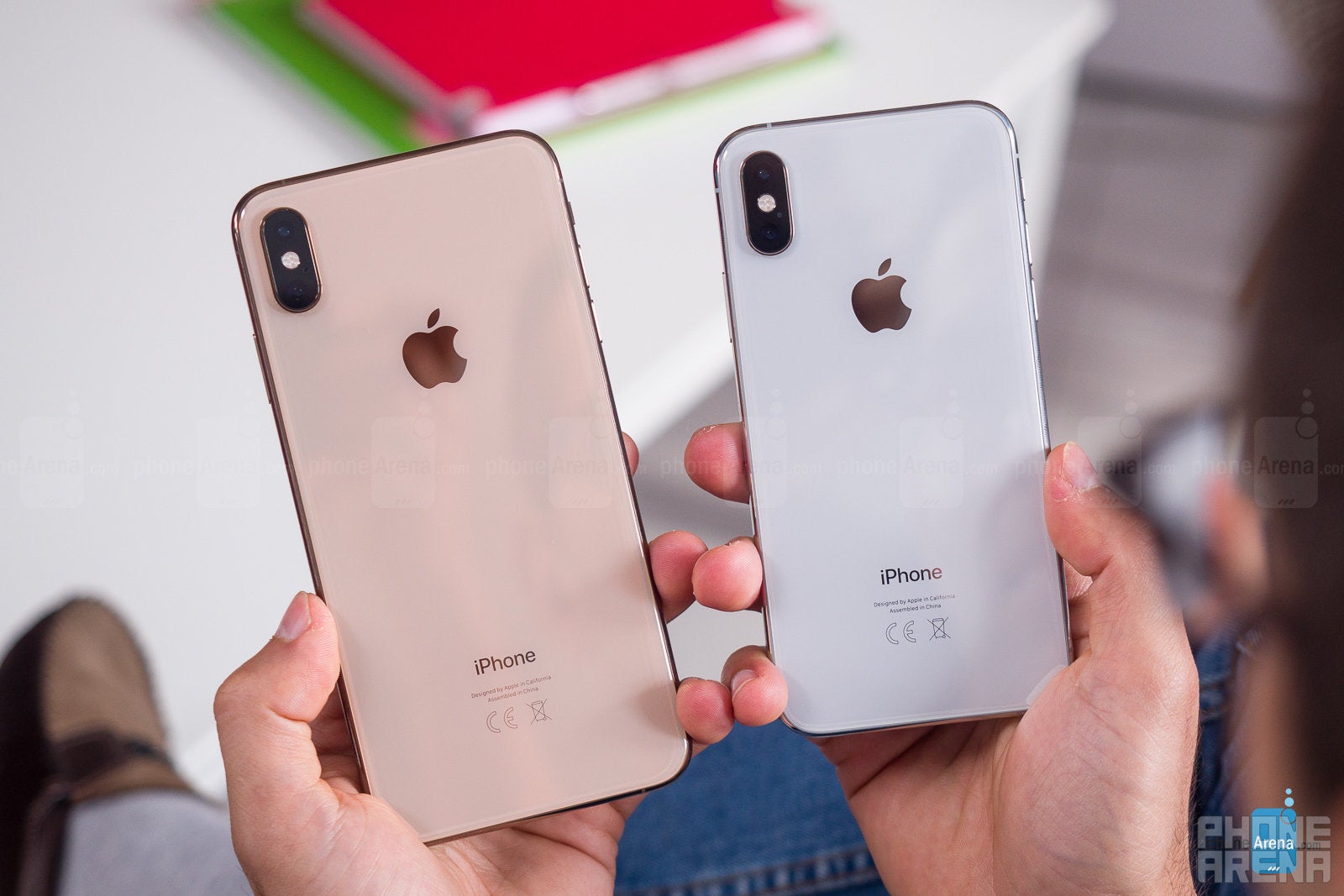
The iPhone XS Max is about the size of the iPhone 8 Plus, and to be honest, no one really loved the design and dimensions of those Plus phones. However, now that the entire front is a 6.5” OLED screen, things change, and the surfboard design is suddenly not as absurd. Make no mistake – the XS Max is big. And heavy! It tips the scales at 7.34 oz / 208 g, which is about 17% heavier than the XS (but about as heavy as the iPhone 8 Plus).
If you've already gotten used the to the Plus size, though, or feel ready to finally take the plunge, you'll be happy to know that Apple's bezel-less design translates quite well. It's not annoying as the bezel-rich design of previous Plus iPhones. It looks nice and modern, and sure – it does come off rather large, but you feel like you're getting enough in return for having to carry around such a biggie. But again, the point stands that Apple needs to slim the whole thing down a bit, and if possible, make it weigh less, so that you don't have to fasten your belt extra tight.
Display
In big and bigger
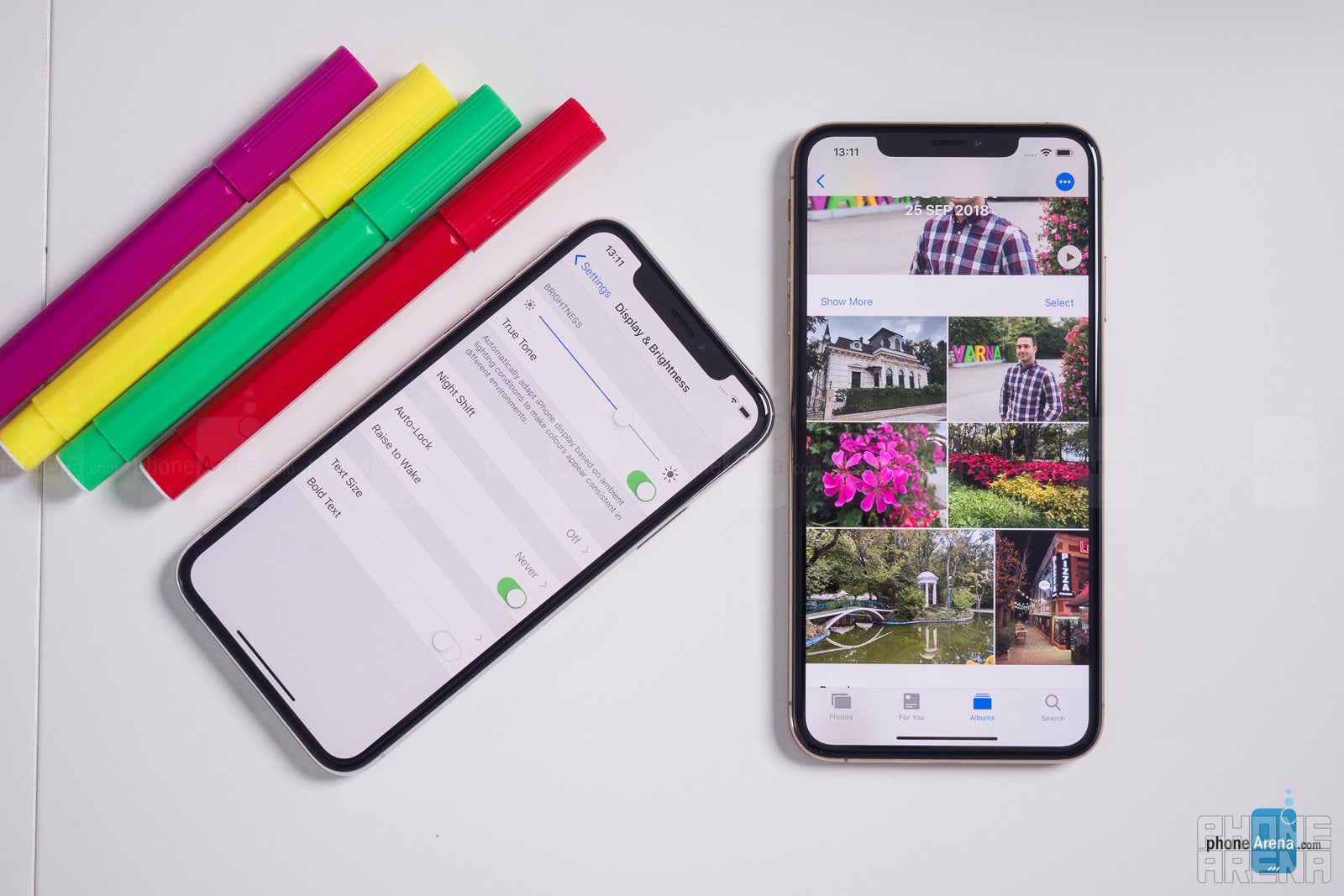
Protected by what Apple calls the strongest glass used on a smartphone, are the same 5.8" OLED display and the brand new 6.5" OLED display. Aside from the bigger diagonal on the XS Max, the properties of the screens are the same: Apple has kept the same 458 ppi pixel density on both handsets, by increasing the resolution of the XS Max. With no other differences to speak of, we're basically looking at identical picture quality on both phones. One is just... bigger.
These displays are as good as can be, delivering lively and vivid images that will almost spill over the edges. And the good news is that a year after the iPhone X debuted, we're yet to hear of any reports about burn-in on these displays, which means Apple's custom OLED preservation tricks are working.
The iPhone XS Max has a gigantic display. It's massive. If you're coming from an iPhone Plus, the change won't be so staggering, but any of Apple's "regular"-sized phones are dwarfed by the Max. The Max's screen will prove to be beneficial in scenarios where the user tends to enjoy a lot of media content, like video, photos and games. If your usage habits don't heavily gravitate around these things, the practical benefit over the XS's already sizable screen seems to be marginal.
For example, if we compare how much content we see in different apps, we get just one more email visible in Mail on the XS Max, a note and a half more in Notes, a couple more items in Settings, or just a tiny bit more of a website in Safari.
One of the bonus features that you get on the XS Max is split-view, where for example in Mail, when viewed in landscape, you get a list of mails on the left, and the selected email on the right. However, that’s not really knew, as we already had this feature on Plus iPhones. At this point with iOS 12, Apple isn’t taking advantage of the iPhone XS Max’s gigantic screen in any significant way. Instead, the big screen will be making its biggest impact when the user is enjoying media, like video, games, or books.
True Tone is great, but not perfect on OLED
One of the more ingenious display features in recent iPhones, True Tone, where the phone uses your surroundings to balance the display's colors so that they look nice and natural all the time, is back again here on the iPhone XS and XS Max. However, just like on the X, True Tone tends to be a bit heavy-handed. In some environments, it works beautifully, but in many others, it often overreacts, making colors needlessly warm. Comparing its performance against LCD Apple devices, like the iPhone 8 or the iPad Pro, we find Apple's OLED display to be less accurate in setting the right white balance, often ending up looking too yellowish, instead of naturally white. For some reason, the tech seems to work better on Apple's LCD displays.
HDR Display
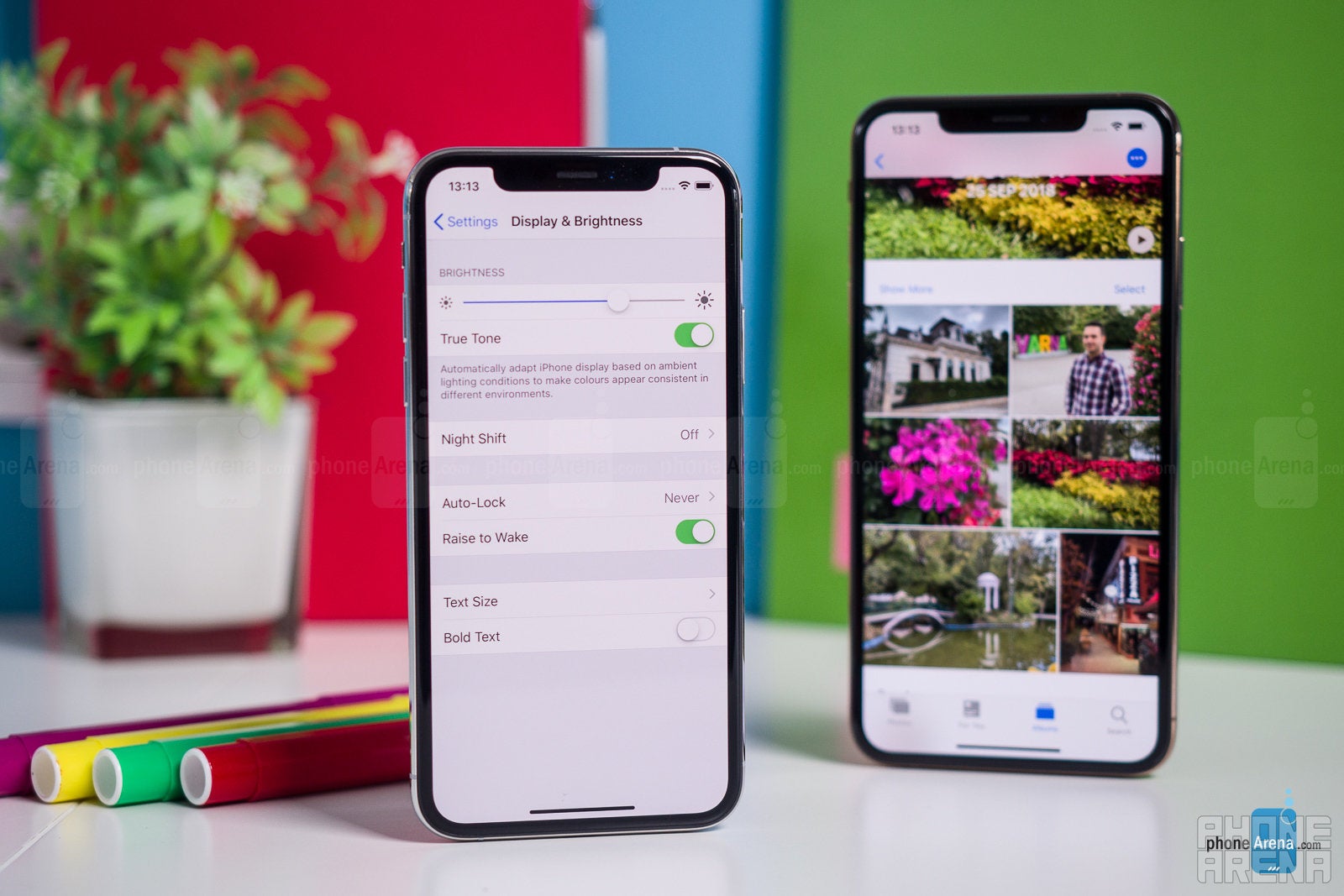
The iPhone XS and XS Max, just like the X, support both HDR10 and Dolby Vision. These HDR video standards mean that the OLED displays have the needed high contrast and wide color gamut support in order to properly showcase content that’s been recorded in HDR format.
HDR movies can generally have richer colors, as well as more preserved detail in highlight and shadow areas, for a fuller, more lifelike look. While the effects of HDR video are more pronounced on the bigger scale of a living room TV, it definitely doesn’t hurt to have these visual enhancements running on the phone as well. After watching some HDR10 and Dolby Vision footage on the XS and XS Max, we can’t say that we notice any groundbreaking improvements over a quality, non-HDR mobile display, but of course this will also be heavily dependent on the material that you’re playing: some movies may take fuller advantage of HDR than others.
If you want to find some HDR content to play, Apple has quite the catalog in iTunes, but you can also find compatible titles in Netflix and Amazon Prime Video.
Complementing the great visual experience are the improved stereo speakers, which not only continue to pump out amazing sound for a phone, but now also do so a tad louder and with a more spacious stereo effect.
Interface and features
Powered by iOS 12, the iPhone XS and XS Max come with outstanding performance and a host of fun and useful features
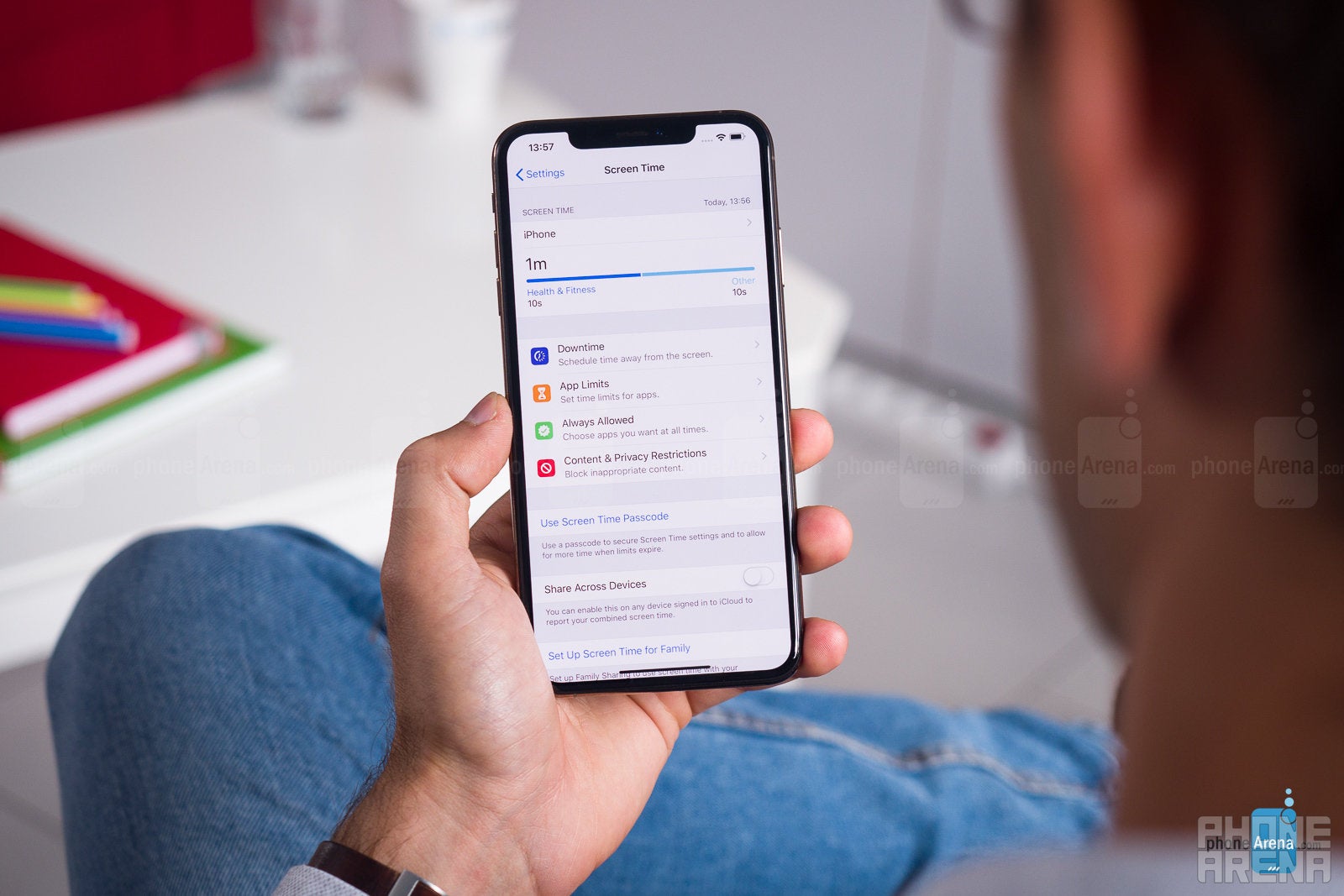
Case in point, Memoji! Now you can not only select from a predefined roster of Animojis to play and record messages with, but you can create a brand new one which may or may not look like you – the choice is yours. More often than not, you'll want it to at least resemble you in some way, so that you can troll your friends with FaceTime calls where you have your virtual Memoji avatar overlaid on top of your own face. Now that's what we call quality fun!
But iOS 12 is not all about entertainment. In addition to a very real and meaningful performance boost for iPhones old and new, it also brings useful new features such as grouped notifications, enhanced AR capabilities, Screen Time (a new wellness feature that can help you reduce your, well, screen time to healthier limits), as well as new FaceTime that can do video conferencing with up to 32 people. That last one is coming with an update soon.
The more powerful A12 Bionic chip in the iPhone XS and XS Max, however, enables some improvements unique to Apple's new flagships. Utilizing the excess processing power and new Neural Engine for machine learning and similar operations, the XS and XS Max enable things like even faster Face ID, or a smarter contextual search in Photos. For example, if you're looking for a specific picture of your dog, you can just type in "dog" in the search box, and you'll get relevant results, without any prior tagging or labeling of your photos. Unlike Android applications of this technology, Apple doesn't utilize computing power in the cloud to accomplish such tasks, but uses exclusively on-device processing, which, at least in theory, is better for your privacy.
Performance: A12 Bionic and the Neural Engine
Apple lays the groundwork for the future with real-time, on-device machine learning
We're used to seeing Apple make humongous performance leaps with each new generation of its custom-designed A-series chipsets, and this year's iteration doesn't disappoint. However, it may be an upgrade that aims to deliver improvements in some more specific areas, and not necessarily pure performance. This may be indicated by the fact that Apple has chosen to keep the same "Bionic" branding as in its previous chipset.
According to the company, the A12 Bionic brings up to 15% increased performance for the two high-performance cores, while the four low-power cores consume up to 50% less energy. That's not very indicative of the real performance gains, but we guess those aren't tremendous. This does bode well for battery life, though.
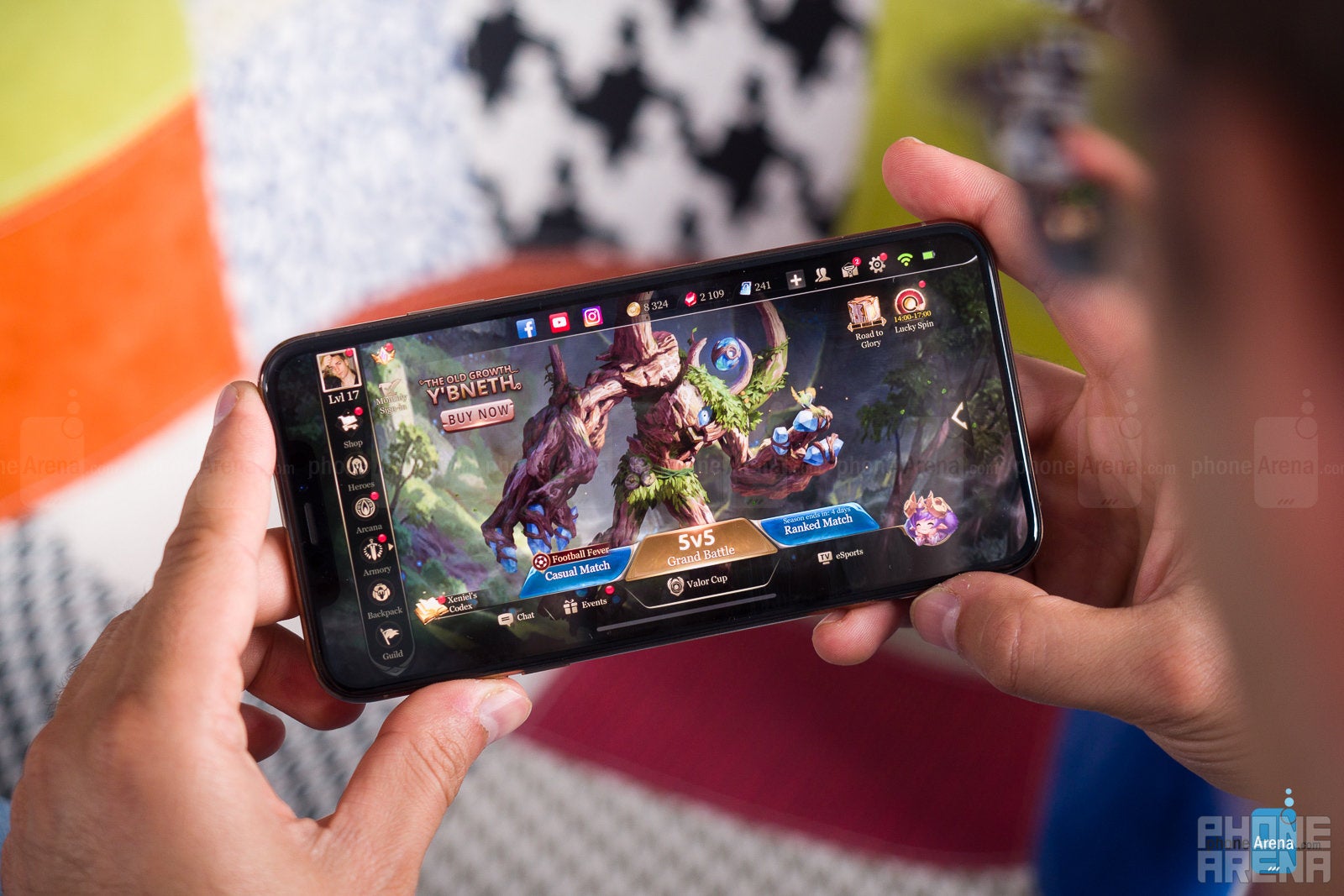
Meanwhile, the new GPU is said to be a monster (yet again), with a new, quad-core design (it was tri-core in the A11) that allows for up to 50% better graphics performance. It's really difficult to test this, considering that Apple's previous chips already excel at all kinds of tasks, but if anything, we guess Apple is just future-proofing its products, which is great.
And if the pure processing benefits don't sound all too exciting, it's because there's more to the A12 Bionic than just raw numbers. More specifically, there the new Neural Engine and the new ISP (image signal processor). The Neural Engine is what's powering Apple's machine learning efforts – it can handle on-device, real-time machine learning that enables the phone to recognize patterns, make predictions, and learn from experience. As computers become smarter, more advanced and more proactive, it becomes clear that such technologies will be very important in the future. Thus, the new Neural Engine in the A12 Bionic has become way more capable.
The thing is that we don't get to enjoy the fruits of all this work yet. Apple itself doesn't provide too many examples of how this technology may be useful in the now. We know the phone can do better in things like contextual searches in the Photos app, but aside from that, we don't know exactly where or when the iPhone uses machine learning to enhance our experience.
Memory: up to 512 GB storage!
Last year, Apple's iPhone X and 8 came in 64, 128 and 256 GB variants. The company is now looking to sweeten the deal for consumers reaching for higher configurations, as the iPhone XS and XS Max are now available with 64, 256, or 512 GB of storage! Sadly, the base configuration remains at 64 GB, but even that is still plenty of storage for apps and games. If you are really into 4K video recording, especially at 60 fps, then it might be wise to think about getting either the 256 GB variant, or even the 512 GB one, if you're that extreme.
Apple is also stepping up its RAM game. It's going up from 3 GB in the X and 8 Plus, to 4GB on the iPhone XS and XS Max. Again, these are mostly future-proofing measures. At least at the current rate, iOS shouldn't outgrow this amount of system memory for at least another 2-3 years.
Camera
Smart HDR is a game changer, but the bigger sensor helps as well
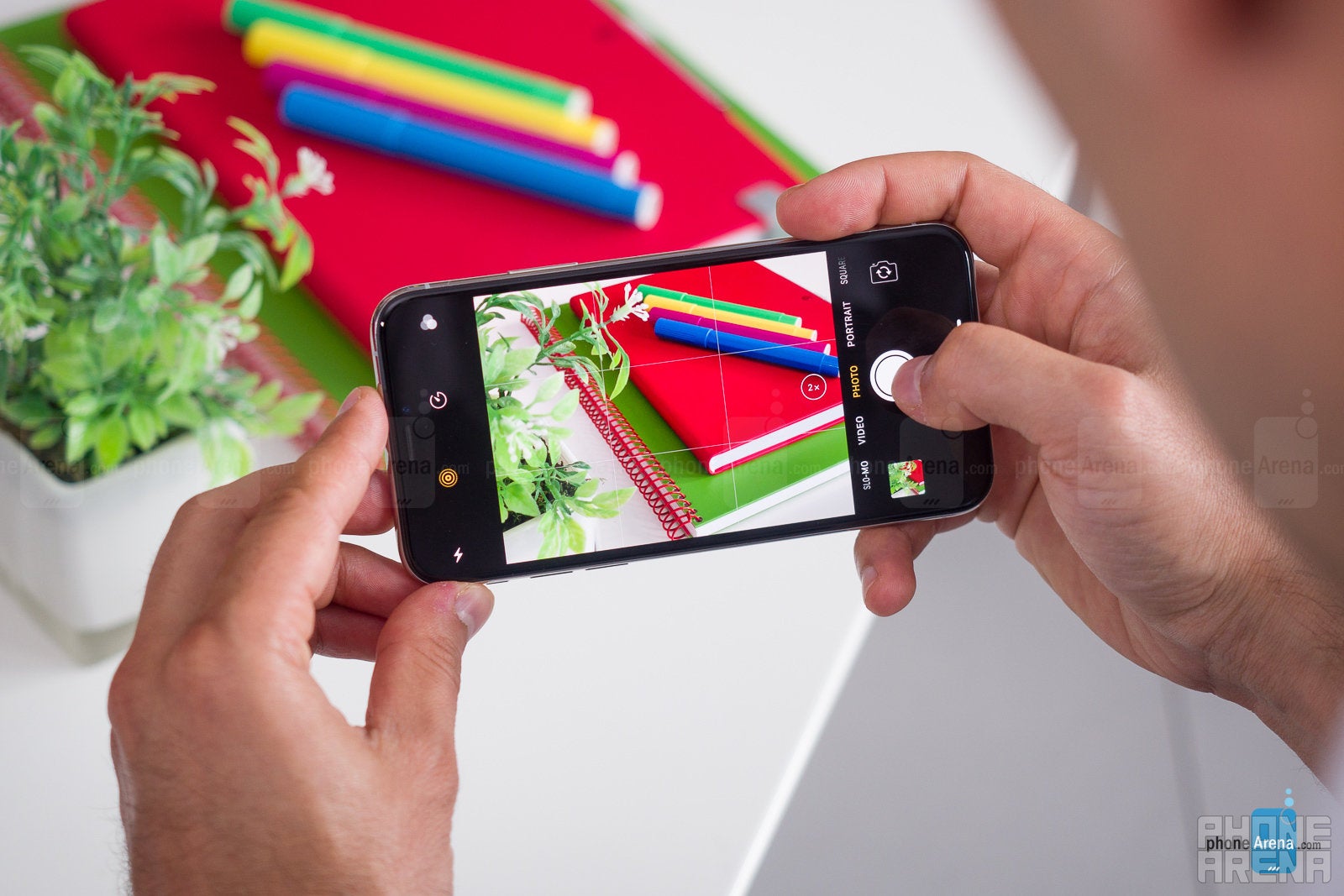
Continuing the photography-centric theme that we've been seeing with Apple smartphones in the last few years, the iPhone XS and XS Max bring meaningful upgrades to the camera systems yet again.
The killer new feature here is called Smart HDR. The new iPhones will be using their more advanced ISP (image signal processor), the Neural Engine and the better internals to achieve overall more complex processing of the images going into the camera. Smart HDR relies on a ton of computations in order to achieve brighter, yet balanced images. Kind of where Google has been taking its Pixel phones and their critically-acclaimed cameras.
Like any HDR feature, Smart HDR aims to deliver more nuance and details in highlight and shadow areas, all the while presenting a properly lit subject. We've taken a bunch of photos using the new XS camera and compared the results with what's come out of the iPhone X's camera, and we can say there's indeed a marked improvement. Smart HDR works and it's a welcome improvement over last year's camera. Smart HDR currently exists as a toggle setting which is 'on' by default. As far as we can see, there's no reason to have it off.
The other interesting new camera feature debuting with the iPhone XS and XS Max is Depth Control. What it does is it lets you change the amount of bokeh (background blur) that you get in Portrait mode photos. So, imagine that you take a portrait of someone using Portrait mode. After that, if you view the image in the Photos gallery and engage the editing options, in addition to the well-known lighting effects, you'll also get the option to change the amount of background blur (Depth Control). It tries to emulate the amount of bokeh that you'd be getting from lenses with apertures from F1.4 to F16.
We tried tweaking Depth Control in a number of shots and we can say that even though the default, F4.5 setting seems to be bang on in most cases, you can still get a pretty rad effect by tweaking the amount of blur to your liking. What's more, say the camera couldn't map your subject too precisely, resulting in a couple of unsightly artifacts here and there. By lessening the blur effect manually, you can end up with a more tolerable and usable photo.
Improved sensors
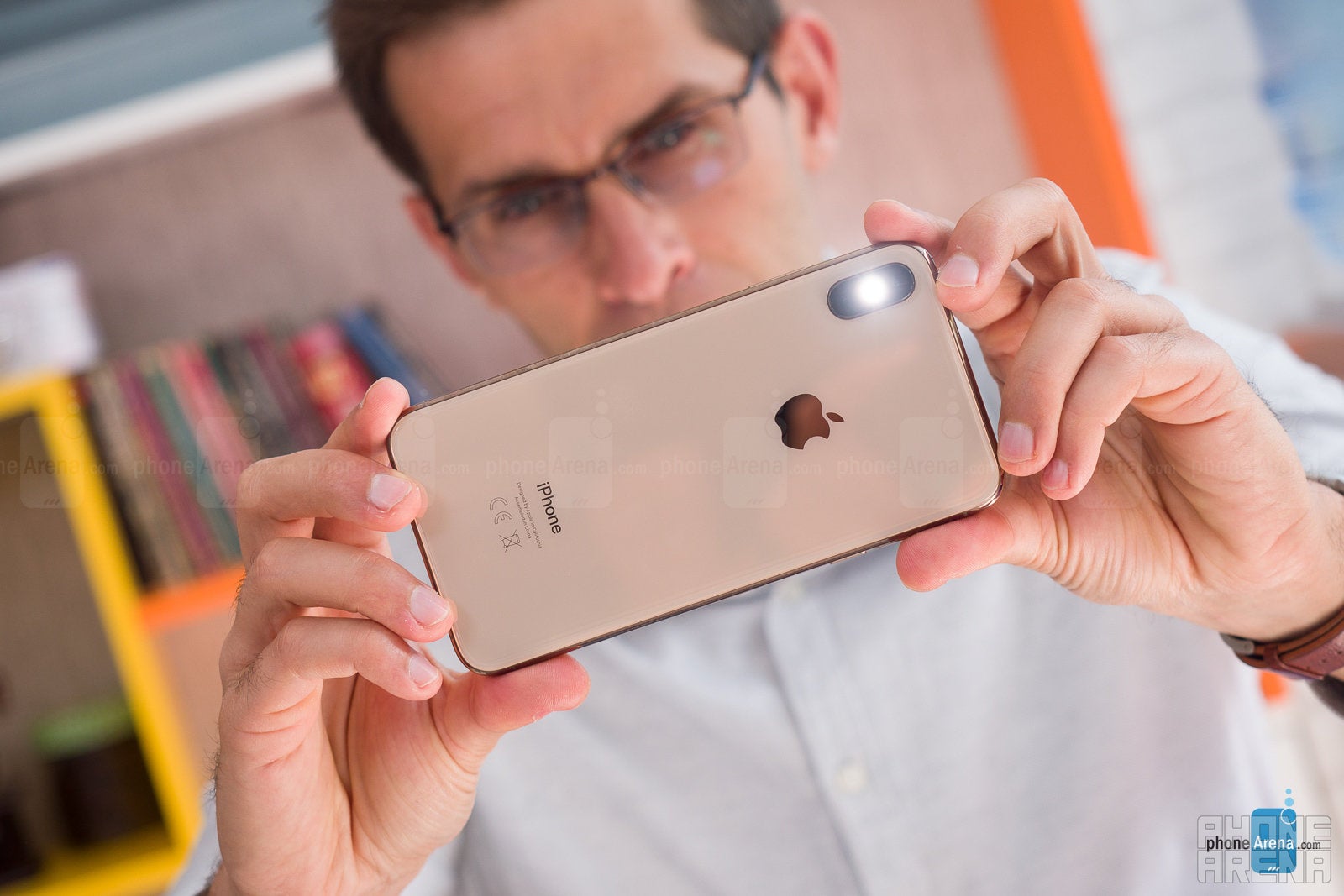
Now, let's talk hardware! The main 12 MP camera has received a new sensor, with bigger and deeper pixels for improved fidelity and light-sensitivity. And while there don't seem to be any interesting improvements done to the secondary, 12 MP telephoto camera, the True Tone flash has been further improved with an advanced flicker-detection system.
The front-facing 7 MP camera is also new, with a faster sensor that will lessen the chance of you meeting a celebrity and walking away with a blurry selfie. The front camera has also benefitted from the new ISP and Neural Engine, inheriting the same Portrait mode improvements and Depth Control from the main camera. The selfie snapper has also scored 1080p video recording at 60 fps, along with the awesome Cinematic Video Stabilization feature. Talk about upgrades!
Image quality
The iPhone XS and XS Max take terrific photographs. In comparison with last year's iPhone X, things have improved mostly thanks to Smart HDR. The bigger camera sensor pixels also have an effect, in that the XS and XS Max capture just a tad more fine detail than the X, but the way bigger difference comes from Smart HDR and how it manages to properly expose the entirety of the shot.
Not every image will greatly benefit from Smart HDR, but many will. Take a look at this portrait photo captured with the iPhone XS Max on the left, and the X on the right. Because it’s a dynamic scene and there’s a lot of light coming in from behind the subject, Victor appears fairly dark in the photo from the iPhone X. With its more sophisticated processing, though, the iPhone XS manages to properly expose both the subject and the background.
Here is another example, where, in order to properly expose the darker, central area of the scene, the iPhone X had to seriously overexpose the objects to the right. The iPhone XS, on the other hand, demonstrates a way greater dynamic range, and thus has everything exposed correctly – there is no detail or color information lost in its photo.
Speaking of colors, the iPhone camera continues to favor slightly warmer tones, but the effect is not excessive at all, so images tend to look very realistic most of the time.
Video recording
There are some interesting improvements in the video capturing department. In a similar manner to still images, dynamic range has been extended in video recorded with the iPhone XS and XS Max as well (only at up to 30 fps). And then, there’s also stereo recording now, providing a more spacious sound to videos you’ve captured.
The other improvements, which we already mentioned, have to do with the front-facing camera, which can now capture 1080p video at up to 60 fps (before it was limited to 30 fps), and there’s Cinematic Video Stabilization. Plus, the extended dynamic range is supported by the front camera as well, albeit when recording at up to 30 fps again.


Multimedia
iTunes, Apple Music and App Store feel right at home on the large OLED screens
Even with these peculiar display notches, the iPhone XS and XS Max are probably the best phones to enjoy multimedia on right now. Obviously, the XS Max is the way to go if you tend to watch a ton of video or play a lot of games on your phone. That 6.5” OLED screen is so big and so beautiful, it’s hard to resist! Seriously, you don’t need a tablet if you have this phone.
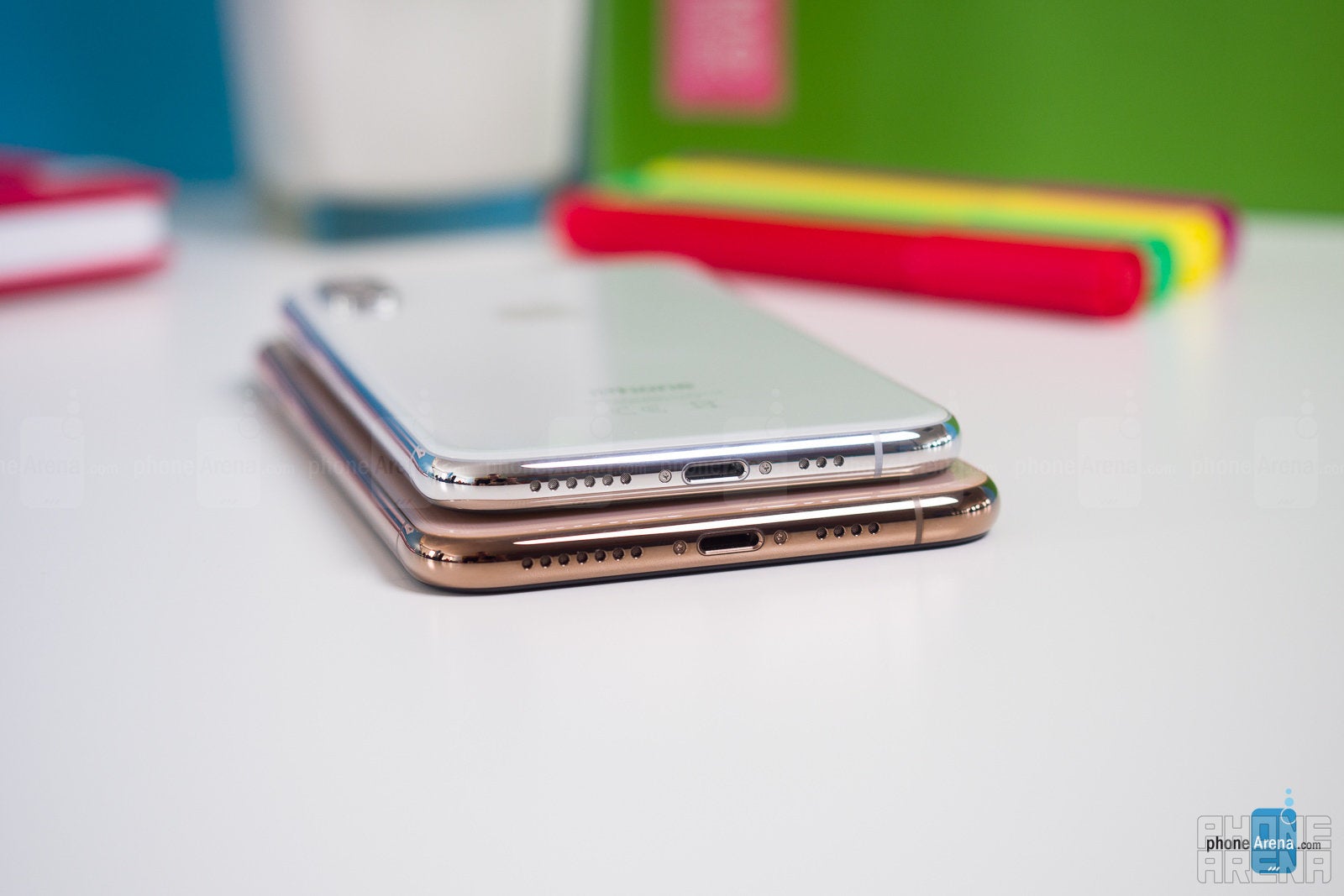
But there’s more to the XS and XS Max than the big, lush screens, if you happen to a media buff. Their stereo speakers are simply amazing. At times, we’ve been questioning how it can be at all possible for such small speakers to output such strong and deep sound. The speakers on the X were already great, but the iPhone XS and XS Max take them to a whole new level with an even stronger output with greater sense of stereo.
So the iPhone XS and XS Max are great devices for entertainment, and the iTunes, Apple Music, and App Store platforms are outstanding places to get your media from. The iTunes store for movies is particularly great, because it offers a wide selection of HDR10 and Dolby Vision-ready films, properly labeled so that you know exactly what kind of quality you’re going to get.
Call quality
Loud and clear
There are no issues to report of when it comes to call quality on the iPhone XS and XS Max. Sound coming from the earpiece is loud and clear, with good audio characteristics. Of course, this is network and coverage dependent. Over on the outgoing side, callers reported similar results, having been hearing us in a loud and clear manner.
As mentioned already, the stereo speakers on the iPhone XS and XS Max are spectacular, which means using the speakerphone for audio calls is a great idea.
A brand new feature that debuts on the new iPhones is dual SIM support. Apple's implementation uses the built-in eSIM slot, along with the physical nano SIM card slot. To get it working, one of your carriers needs to support eSIM, so that they can activate the service on your iPhone. Then, you just pop in the SIM card from your second carrier into the nano SIM tray, and you're good to go. You can choose which SIM will be handling your data transfers, and when it comes to calls, the supported standard is Dual SIM Dual Stand-by. This means that if you're currently having a conversation through SIM 1, and at the same time someone calls you on SIM 2, they'll go straight to your voicemail.
Battery life
It's good, but expect no wonders
Battery life is an area where we expected a slight uptick in longevity versus previous-generation iPhones, but at least our initial battery testing doesn’t seem to suggest such an increase.
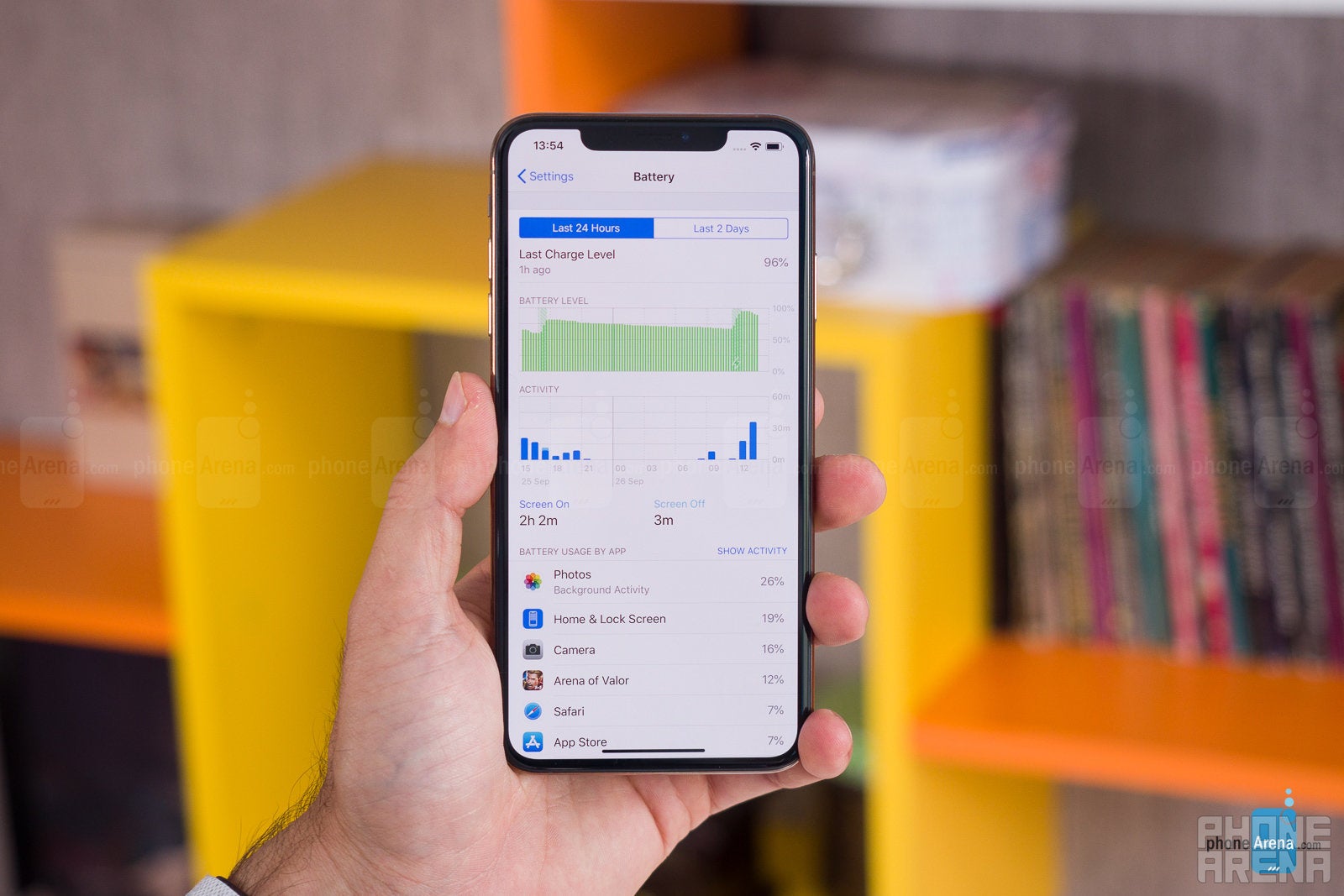
For the iPhone XS and its 2659 mAh battery, Apple is promising up to 30 minutes longer battery life than the iPhone X. However, our custom test reveals results that are pretty much the same between the two phones. Apple does go on to specify that the XS should get about an hour less in a controlled talk time battery test (20 vs 21 hours), while in continuous video playback it should be slightly ahead (14 vs 13 hours). All other numbers are shown to be equal: 12 hours of internet usage and 60 hours of audio playback. So, it’s unclear exactly where this half-an-hour overall increase in battery life is expected to come from.
As for the XS Max, Apple is promising up to 1.5 hours longer use than the iPhone X. On the PhoneArena battery test, the iPhone XS Max scored an hour more than the iPhone X, which is a pretty good result, but not as high as what the iPhone 8 Plus scored. Either way, the XS Max is shown to achieve higher numbers than the X in all categories, from internet browsing to video and audio playback, thanks to its larger, 3179 mAh battery. As expected, it is the longer lasting phone of the new duo.
At the end of the day, if we talk absolute numbers, both the iPhone XS and XS Max achieve great results. Considering all the punch they pack, it is a real achievement that they can last as long as they do on a single charge.
The stock chargers Apple ships with the XS and XS Max are, as usual, very slow. Even though the phones support fast charging technology, the bundled 5 W chargers can in no way take advantage of that. And thus, using the stock charger, the iPhone XS takes a total of 3 hours to go from 0 to 100%. And as if that wasn’t long enough, the humongous XS Max will take even more: 3 hours and 29 minutes for a full charge! Unfortunately, while we’re waiting for the day when Apple will finally start shipping its iPhones with more powerful, fast chargers, the only option for quicker charging would be to purchase them separately. Even a 12 W iPad charger will net you way faster charging speeds, but if you really want to take full advantage of the built-in quick charging capabilities, you’ll need an even more powerful brick, as well as a compatible cable such as the Thunderbolt 3 to Lightning cable that Apple sells.
Alternatively, you can always invest in a wireless charger and use that as your primary means to top up your phone.
Conclusion
The iPhone XS and XS Max are your best choice if you’re looking for a no-compromise smartphone experience (and money’s not an issue). They are not perfect, but their few imperfections are vastly outnumbered by the many, many things they get just right.
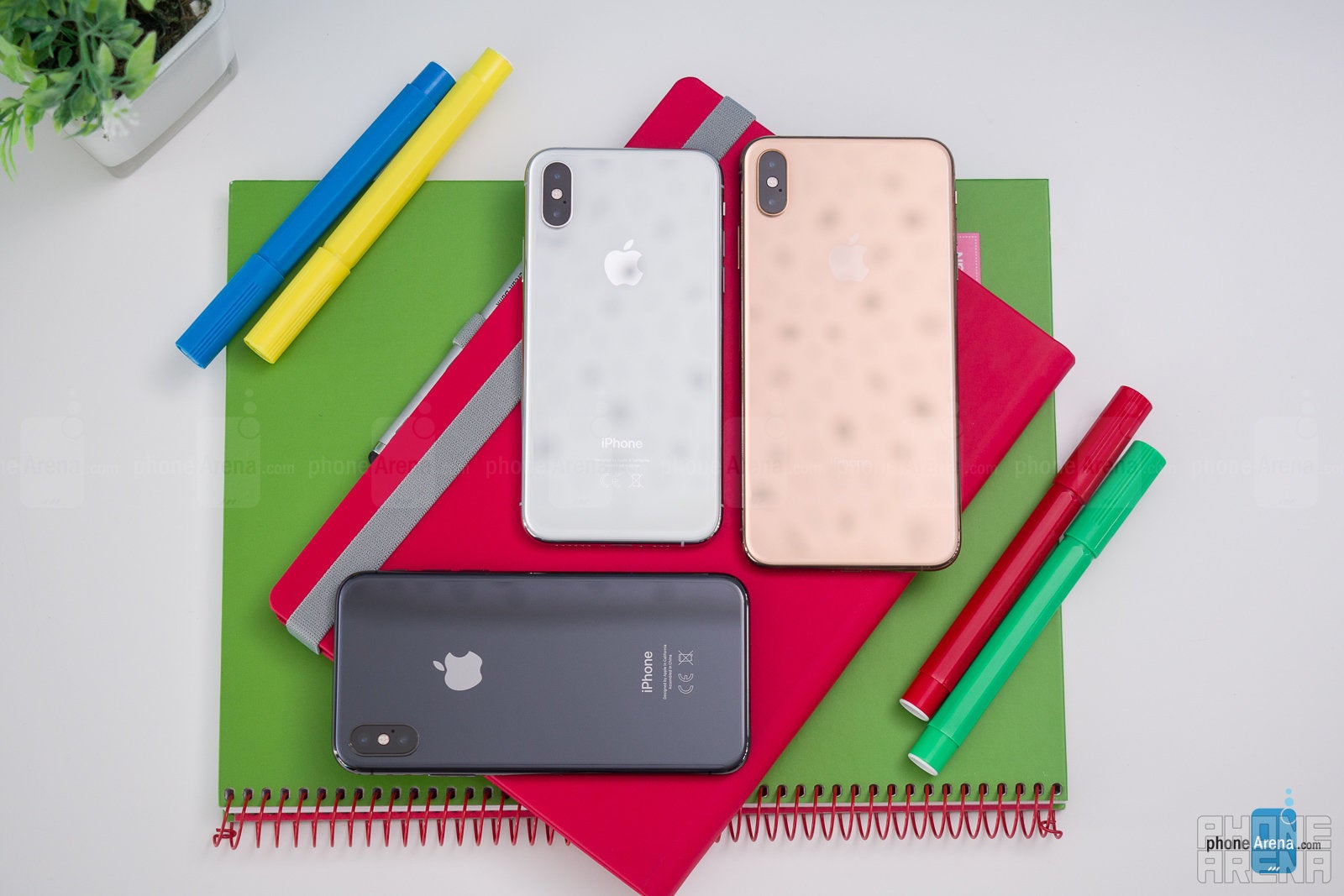
Hardware-wise, the XS and XS Max are second to none. Performance is unwavering, the OLED screens are large and beautiful (and reliable), and the new cameras are spectacular. The design speaks for itself. It’s a bit pretentious, sure, with all the glass, polished stainless steel and considerable heft. But it manages to keep its feet on the ground, and through a series of practical decisions, such as the big camera bump, the display notch and the multiple antenna bands, it remembers that it’s first and foremost a tool.
A tool, which can take advantage of every ounce of its incredible power thanks to iOS 12 – a platform that is as beautiful as it is versatile. Whether you’ll be using this powerful tool as a $1000 Facebook machine, or as a pocket computer for photography, media creation, reading, or life organization is up to you. Either way, it won’t fail you. We’ve reached a point where you can do everything with any mobile operating system (read: iOS and Android). There are no limits; so which one you’ll prefer is just a matter of budget and style.
And when it comes to choosing between the XS and the XS Max, it’s actually a very simple choice. Do you live on your phone? Is it your go-to device for all things digital? Do you watch a ton of video, and play a lot of games? Do you have really big hands? You get the idea. If the answer to all these is yes – get the Max. But if you’re more of a casual user, stick with the more convenient gadget, which is the iPhone XS.
Follow us on Google News


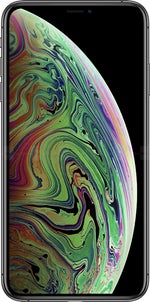

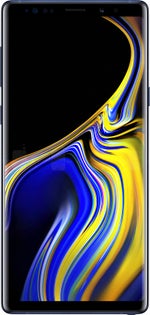





























Things that are NOT allowed:
To help keep our community safe and free from spam, we apply temporary limits to newly created accounts: